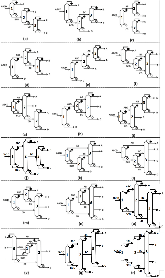Short-cut Methods versus Rigorous Methods for Performance-evaluation of Distillation Configurations
- Purdue Univ., West Lafayette, IN (United States); Davidson School of Chemical Engineering, Purdue University
- Purdue Univ., West Lafayette, IN (United States)
Here, this study demonstrates the efficacy of a short-cut method such as the Global Minimization Algorithm (GMA), that uses assumptions of ideal mixtures, constant molar overflow (CMO) and pinched columns, in pruning the search-space of distillation column configurations for zeotropic multicomponent separation, to provide a small subset of attractive configurations with low minimum heat duties. The short-cut method, due to its simplifying assumptions, is computationally efficient, yet reliable in identifying the small subset of useful configurations for further detailed process evaluation. This two-tier approach allows expedient search of the configuration space containing hundreds to thousands of candidate configurations for a given application.
- Research Organization:
- Purdue Univ., West Lafayette, IN (United States)
- Sponsoring Organization:
- USDOE Office of Energy Efficiency and Renewable Energy (EERE)
- Grant/Contract Number:
- EE0005768
- OSTI ID:
- 1437937
- Journal Information:
- Industrial and Engineering Chemistry Research, Journal Name: Industrial and Engineering Chemistry Research Journal Issue: 22 Vol. 57; ISSN 0888-5885
- Publisher:
- American Chemical Society (ACS)Copyright Statement
- Country of Publication:
- United States
- Language:
- English
Global minimization of total exergy loss of multicomponent distillation configurations
|
journal | August 2019 |





